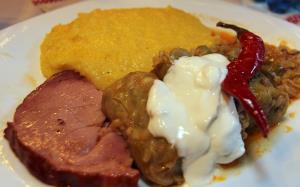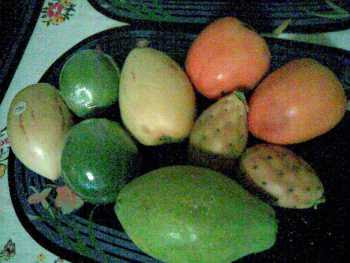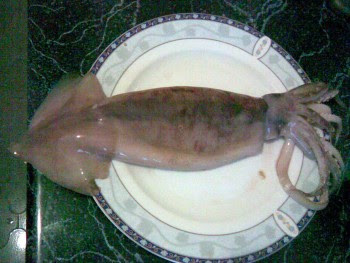Cooking my first sarmale

Sarmale is a dish that is traditionally eaten around Christmas in Romania, although you can make them all year round and some Romanians do. This type of food probably has Turkish origins, since the word "sarmak" means "roll" in Turkish and "leh" is a common Turkish pluralization. Not that I know Turkish, but part of Romania was conquered by them, so some things remain. Sarmale is one of the good ones, but it is a time consuming dish to prepare so I never cooked it myself. That's what parents are for, right? However, recently when I was abroad, I found myself wanting to cook some for my foreign friends. Unfortunately I couldn't do it then, but the idea to cook some tasty sarmale remained.
Today me and the wife set off to do just that. She knows how to make them, unfortunately. That means that my giddiness was uncalled for, since I expected numerous improvements on the recipe, but instead I was coerced to follow "the law". Even worst, due to differences in taste and digestive systems as well as a lack of some more exotic ingredients, the recipe we agreed on is some of the simplest possible. No onion, no garlic, no paprika, no parsley in the mix, nor bacon or tomato sauce - only outside. However, I am sure that even so they will be extremely tasty and the simplicity of this recipe means even people that don't know how sarmale should taste like can do them at home and then experiment with their national ingredients.
Without further ado:
- mix pork and veal chopped meat with some rice and pepper (and optionally thyme)
- wrap mixture in pickled cabbage leaves to get the sarma rolls
- put rolls in a large pot in the following fashion
- first a layer of simple chopped pickled cabbage
- a layer of sarmale, put one next to the other, but with some small space left, since they will grow
- put a layer of chopped pickled cabbage and some bacon and a bit of smoked meat (like ribs), more thyme, maybe a little hot paprika
- repeat the previous two steps until the pot is full
- add water to fill the space
- place in oven at 150C (300F) and cook for at least three hours
The time consuming part if the making of the rolls, which not only requires manual labor for each roll, but also needs good cabbage leaves, cut in the correct way. Plus the long cooking time. In Romania we eat them with polenta, sometimes with cream or yogurt, while biting from raw chilly peppers. Some prefer them hot, some like them cold. I especially like the cold ones, because you can just pick them up and eat them.
Now, the dish called sarma is done differently in each country. If you google "sarma" you get recipes from the former Yugoslavia (see this, as an example), but if you google "sarmale" you get the Romanian ones (Here is a decent one). The types of leaves used, the mixture, the cooking style may very drastically. I, for one, want bacon,onion and garlic in the dish. I would also add some tomato sauce and hot paprika in the mix on principle. I wanted to experiment with different types of meat, coriander, cumin, Indian spices and so on. There are also different types of leaves, but I would say that the pickling of the cabbage is one of the main reasons why the sarmale are so good. Perhaps other types of leaves could also be pickled, but that means I either have to do it myself or use the standard ones that you can find already pickled at the market. Perhaps one of the things that makes my mouth water the most is to add some mutton sausage mix in the meat, moving more towards the Arabic style of meat dishes, or just add sheep fat over the sarmale when they are cooking.
But why stop there? If you look at the various recipes, some of them start off by frying the garlic, onion and rice. Some of them add egg to hold the mixture, or celery, or parsley or other things. I know vegetarian people that don't put meat in the mix, or people like my wife who don't want fried onion in their food. There are fish cabbage rolls, there are chicken ones, some people use fine cut potato with or instead the rice. The leaves are usually either grape leaves or cabbage, although some don't use pickled leaves and any large leaf can be used (or even small ones if you are a clock maker with OCD). One example that I've heard about and doesn't appear in the Wikipedia article is using linden leaves. And the leaf type really really affects the taste. The grape leaf sarmale are eaten with yogurt, for example, while the cabbage one rarely so, but are eaten with hot paprika or chilly peppers. In other words, one can create any type of roll using any type of leaf with any type of content, as long as it absorbs the water and fat that carry the taste of the leaf and the other ingredients.
So, do you feel a little inspired by this or not? It is one of the most common Romanian slow cooking dishes and a delight to eat.


